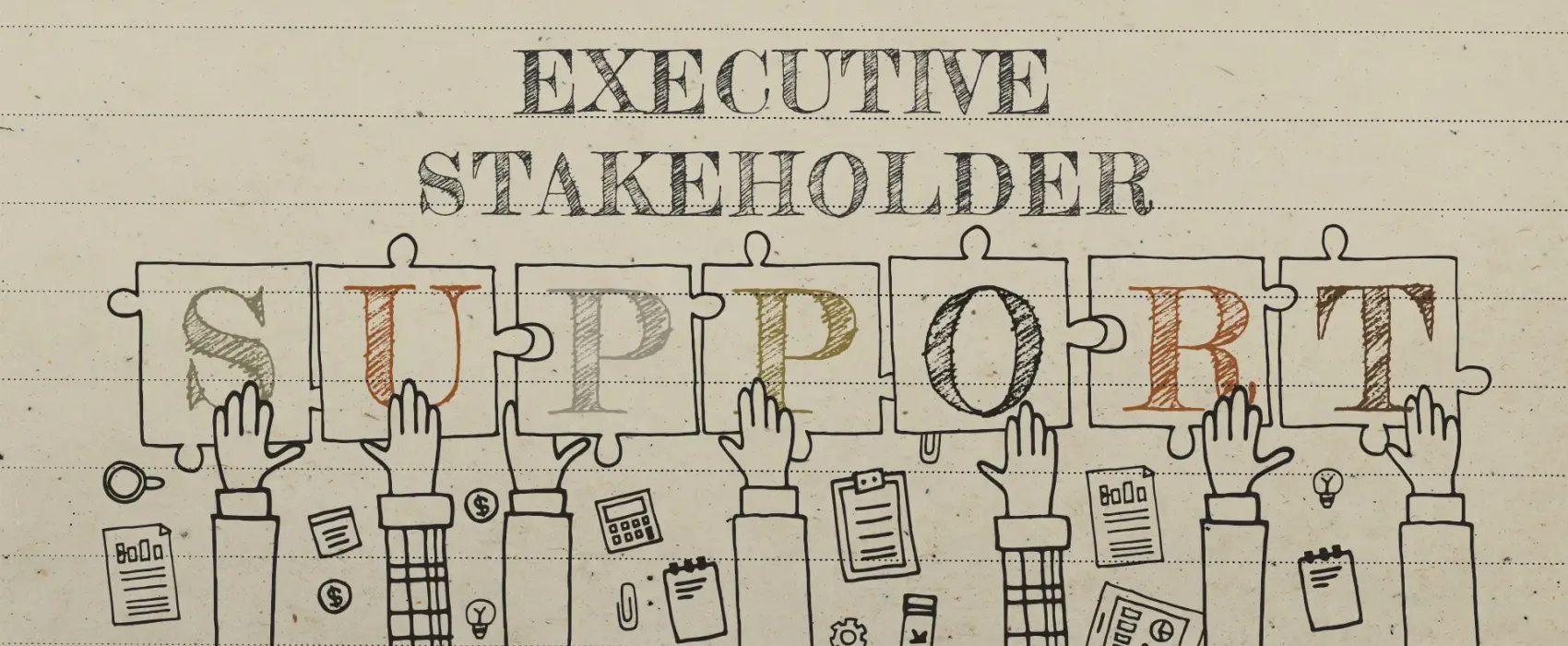Table of Contents:
Many digital transformation leaders treat key risks as assumptions.
Assumptions are usually not explored to the same depth as risks, and this prevents appropriate discussion on the ongoing monitoring of items that should be classified as a risk. An example of a risk you see masquerading as an assumption on many digital transformation programs is:
“It is assumed that executive stakeholders will continue to support the program.”
What a brave assumption to make!
The risk of losing executive stakeholder support is actually a very high probability and losing a fraction of the executive support required can be terminal for a digital transformation program. As executive support wanes, resistance creates barriers including a loss of momentum through slower decision-making, less access to critical resources and an overall loss of morale across the organisation. If an executive is not supportive of the program, most other stakeholders (including your users) know, regardless of what you say.
Why does executive support diminish across the life of a digital transformation?
Digital transformation is hard.
The complexity lies in a combination of new technologies, ways of working, skills, and the high impact and consequences of success or failure. Most likely, executives will be working with a range of new people who speak different terminology, bring different skill sets and ways of doing things to implement large-scale change. And you need to do all this while still running your business.
The excitement of envisioning a new future can quickly fade when the realisation hits: this is seriously hard work.
Implementing new technology is challenging. What is more challenging is navigating the impacts to people and their response to change. Engaged executives will almost certainly spend more time than anticipated helping their people, including their peers, work through what can be a very demanding activity.
Coupled with supporting everyone else, executives often do not have the time to practice self-care during such a busy period and their own health can suffer.
The fear and consequences of failure are a heavy burden to carry for an executive. Expectations to make decisions in new, potentially quicker ways, creates uncertainty. It is difficult to lead and show support for a concept when you feel the weight of the transformation world on your shoulders.
A good transformation leader will always strive to make their executive stakeholders feel safe.
Five examples of reasons that executive leaders will diminish their support for a digital transformation program are:
1. The transformation leader is not speaking a language that I understand, are they really telling me the truth?
2. I feel I am being forced to make decisions without the time and information I am used to.
3. Solutions delivered do not look like I thought they would.
4. My reputation, both internally and externally, is at risk and it feels safer to disengage.
5. My people no longer believe in the program, and it feels safer to side with them rather than influence the changes required to get back on track.
There are plenty more examples.
Encouraging open communication on digital transformation programs.
Creating and managing executive support for the program as a risk encourages the first step of communication.
With a regular review of program risks, the program should have the opportunity to reflect and discuss executive support. It is important at this point that the topic is not glossed over (or assumed), and a genuine conversation is held to understand any risks to executive support. This conversation should include the executives and can be performed individually and delicately if required.
It is important for executives to be candid and direct when discussing any concerns that may impact their support of the program.
It is equally as important for a transformation leader to be receptive and open to all feedback provided. It is natural to become defensive, however your sole goal is to ensure that your executives feel safe. Challenging the feedback and doubling down on your approach will amplify concerns and compromise your program further.
This doesn’t mean that all feedback is valid.
What it does mean, however, is that you now have an opportunity to add additional coaching and influencing for executives that are losing confidence and understanding. Remember, at some point it is likely that this executive is going to be the person who is taking elements of what you deliver forward for the organisation – you need them to understand and be successful, not merely wait out the program and return to business as usual. It is a far better approach to take a longer view, forget about the point scoring, and set up the program for ongoing support and success.
I write about digital transformation weekly. My 📥DMs are always open for engaging conversations.

Community hub
Kindly adhere to our Community Guidelines.